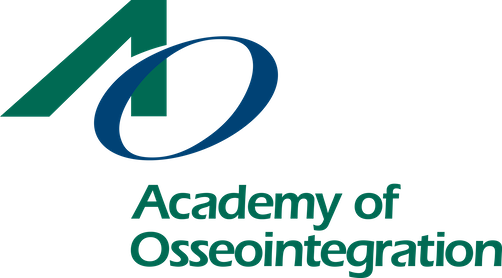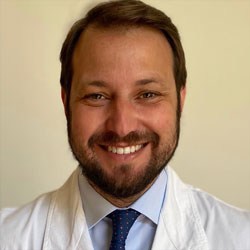-
 Luca Fiorillo, DDS, PhD, MSc Nowadays, dental implantology represents the gold standard in oral rehabilitation, simple or complex. The high predictability over time, and the related techniques to allow the possible rehabilitations are increasingly simple and feasible for the clinician. All this is guaranteed thanks to the presence of new biomaterials, starting from the implant surfaces and their primary or secondary geometries, to arrive at all the biomaterials related to the regeneration and maintenance of peri-implant tissues. The new challenge for the clinician concerns the possibility of keeping these tissues healthy and limiting implant complications, including peri-implantitis. Recorded - August 10, 2021
Luca Fiorillo, DDS, PhD, MSc Nowadays, dental implantology represents the gold standard in oral rehabilitation, simple or complex. The high predictability over time, and the related techniques to allow the possible rehabilitations are increasingly simple and feasible for the clinician. All this is guaranteed thanks to the presence of new biomaterials, starting from the implant surfaces and their primary or secondary geometries, to arrive at all the biomaterials related to the regeneration and maintenance of peri-implant tissues. The new challenge for the clinician concerns the possibility of keeping these tissues healthy and limiting implant complications, including peri-implantitis. Recorded - August 10, 2021 -
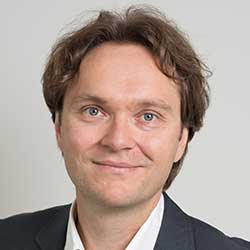 Thomas Hanser, DMD, MSc, MSc, MOM This webinar will describe the indication, scientific background and the clinical implementation of the so-called Split Bone Block Technique (Khoury Technique). This alveolar augmentation technique is based on the use of autogenous bone transplants, which are harvested intraorally using a safe and minimally invasive protocol. A specific preparation of the autogenous bone grafts is demonstrated to increase their biological potential and accelerate their healing. In addition to stabilizing the bone grafts, their hermetic soft tissue closure using innovative flap designs is also shown. In addition to shortening patient treatment time, the grafting technique demonstrated enables predictable and long-term stable volumetric and biological tissue stability in the context of lateral and vertical alveolar ridge augmentation. The philosophy of the Split Bone Block Technique is documented in the webinar through numerous different clinical cases and surgical videos. Upon completion of this presentation, participants should be able to: 1) Select appropriate anatomical structures and instruments for safe and minimally invasive intraoral bone graft harvesting. 2) Describe the specific preparation of autogenous bone grafts to increase their biological potential, accelerate their healing and shorten patient treatment time. 3) Identify the clinical and biological factors for predictable, reproducible, volumetric and biological long-term tissue stability with autogenous bone grafts in lateral and vertical alveolar ridge augmentation. Recorded on April 9th, 2025
Thomas Hanser, DMD, MSc, MSc, MOM This webinar will describe the indication, scientific background and the clinical implementation of the so-called Split Bone Block Technique (Khoury Technique). This alveolar augmentation technique is based on the use of autogenous bone transplants, which are harvested intraorally using a safe and minimally invasive protocol. A specific preparation of the autogenous bone grafts is demonstrated to increase their biological potential and accelerate their healing. In addition to stabilizing the bone grafts, their hermetic soft tissue closure using innovative flap designs is also shown. In addition to shortening patient treatment time, the grafting technique demonstrated enables predictable and long-term stable volumetric and biological tissue stability in the context of lateral and vertical alveolar ridge augmentation. The philosophy of the Split Bone Block Technique is documented in the webinar through numerous different clinical cases and surgical videos. Upon completion of this presentation, participants should be able to: 1) Select appropriate anatomical structures and instruments for safe and minimally invasive intraoral bone graft harvesting. 2) Describe the specific preparation of autogenous bone grafts to increase their biological potential, accelerate their healing and shorten patient treatment time. 3) Identify the clinical and biological factors for predictable, reproducible, volumetric and biological long-term tissue stability with autogenous bone grafts in lateral and vertical alveolar ridge augmentation. Recorded on April 9th, 2025 -
 Preetinder Singh, DDS, MS Bone regeneration is often needed prior to dental implant treatment due to the lack of adequate quantity and quality after infectious diseases. The greatest regenerative power can be obtained with autologous tissue, primarily the bone alive, taken from the same site or adjacent sites, up to the use centrifugation of blood with the selection of the parts with the greatest potential regenerative. In fact, various techniques and technologies were chronologically successive to cope with an ever better preparation of these concentrates of blood. Our aim is to know these advances and discuss the ways in which platelet concentrates may provide such unexpected beneficial therapeutic effects. Most of the growth factors derived from autologous blood is released upon platelet activation, and their clinical use has been popularized with Platelet-rich plasma (PRP), Platelet rich fibrin (PRF) & its advancements namely A-PRF & i-PRF, Concentrated Growth Factors (CGF), Sticky Bone Concept etc. It is time to use this ‘blood’ in different ways to achieve regenerative potentials in the field of implant dentistry. Recorded - January 20, 2021
Preetinder Singh, DDS, MS Bone regeneration is often needed prior to dental implant treatment due to the lack of adequate quantity and quality after infectious diseases. The greatest regenerative power can be obtained with autologous tissue, primarily the bone alive, taken from the same site or adjacent sites, up to the use centrifugation of blood with the selection of the parts with the greatest potential regenerative. In fact, various techniques and technologies were chronologically successive to cope with an ever better preparation of these concentrates of blood. Our aim is to know these advances and discuss the ways in which platelet concentrates may provide such unexpected beneficial therapeutic effects. Most of the growth factors derived from autologous blood is released upon platelet activation, and their clinical use has been popularized with Platelet-rich plasma (PRP), Platelet rich fibrin (PRF) & its advancements namely A-PRF & i-PRF, Concentrated Growth Factors (CGF), Sticky Bone Concept etc. It is time to use this ‘blood’ in different ways to achieve regenerative potentials in the field of implant dentistry. Recorded - January 20, 2021 -
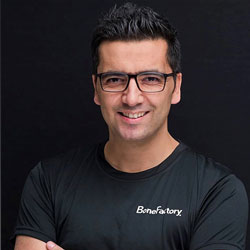 Şerif Küçük, MSc This presentation will review current concepts in implantology-augmentative techniques including:
Şerif Küçük, MSc This presentation will review current concepts in implantology-augmentative techniques including:-
- The Biological Concepts of Bone Augmentation and the Split Bone Block Technique by Professor Fouad Khoury;
-
- utilizing bone chips in the retromolar for safe bone harvesting
-
- discussion of the external oblique line-up and advanced bone augmentation in complex cases.
-
-
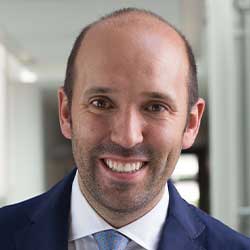 Gianluca Paniz DDS, MS, PhD This presentation will focus on the key restorative aspects that are related to the long-term success of implant restorations and peri-implant tissue stability. Upon completion of this presentation, participants should be able to: 1) Describe the ideal implant positioning in relation to the tooth position and the bone. 2) Explain how to design the implant restoration emergence profile. 3) Select the best restorative material. Recorded on January 15th
Gianluca Paniz DDS, MS, PhD This presentation will focus on the key restorative aspects that are related to the long-term success of implant restorations and peri-implant tissue stability. Upon completion of this presentation, participants should be able to: 1) Describe the ideal implant positioning in relation to the tooth position and the bone. 2) Explain how to design the implant restoration emergence profile. 3) Select the best restorative material. Recorded on January 15th -
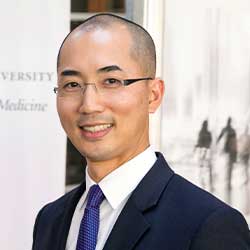 Yong-Han Koo, DDS In this program, you will learn about new innovations in digital robotic workflow for optimal clinical care ranging from a single-tooth, immediate implant therapy to complex situations addressing both severe hard and soft tissue defects using bioactive modifiers and customized GBR techniques in the esthetic zone as well as the posterior maxilla and mandible. Specifically, efficient robotic-assisted surgical protocol based on prosthetically and biologically driven concept will be reviewed in a step-by-step manner. Future concepts will also be discussed. Upon completion of this presentation, participants should be able to: 1) Explain the difference between ‘Success’ vs ‘Survival’ in implant therapy. 2) Discuss when to apply Stage I, II and III surgical protocols based on risk factors and predictability. 3) Recognize the advantages of robotic-assisted surgery and appreciate the benefits of minimally invasive surgery.Recorded December 11th, 2024
Yong-Han Koo, DDS In this program, you will learn about new innovations in digital robotic workflow for optimal clinical care ranging from a single-tooth, immediate implant therapy to complex situations addressing both severe hard and soft tissue defects using bioactive modifiers and customized GBR techniques in the esthetic zone as well as the posterior maxilla and mandible. Specifically, efficient robotic-assisted surgical protocol based on prosthetically and biologically driven concept will be reviewed in a step-by-step manner. Future concepts will also be discussed. Upon completion of this presentation, participants should be able to: 1) Explain the difference between ‘Success’ vs ‘Survival’ in implant therapy. 2) Discuss when to apply Stage I, II and III surgical protocols based on risk factors and predictability. 3) Recognize the advantages of robotic-assisted surgery and appreciate the benefits of minimally invasive surgery.Recorded December 11th, 2024 -
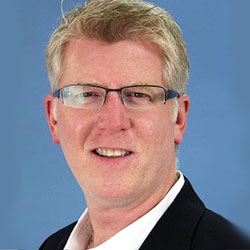 Lee Culp, CDT As dentistry evolves into the digital world, the successful incorporation of computerization and new technology will continue to provide more efficient methods of communication and fabrication while at the same time retaining the individual creativity and artistry of the skilled dentist and dental technician, while the utilization of new technology will continue to enhance the close cooperation and working relationship of the dentist/technician team. This presentation will offer participants a unique insight into digital design by creating a Virtual Patient by combining 3D Face Scanning, IOS and CT scans. Then using a combination of Diagnostic, Restorative, Orthodontic, Denture and Implant planning software for pre surgical planning to design, printed diagnostic wax-up and milled provisional PMMA restorations, and their digital replicas to guide us in the creation of cad-cam restorations, for both tooth and implant supported prosthetics. Recorded - February 5, 2022
Lee Culp, CDT As dentistry evolves into the digital world, the successful incorporation of computerization and new technology will continue to provide more efficient methods of communication and fabrication while at the same time retaining the individual creativity and artistry of the skilled dentist and dental technician, while the utilization of new technology will continue to enhance the close cooperation and working relationship of the dentist/technician team. This presentation will offer participants a unique insight into digital design by creating a Virtual Patient by combining 3D Face Scanning, IOS and CT scans. Then using a combination of Diagnostic, Restorative, Orthodontic, Denture and Implant planning software for pre surgical planning to design, printed diagnostic wax-up and milled provisional PMMA restorations, and their digital replicas to guide us in the creation of cad-cam restorations, for both tooth and implant supported prosthetics. Recorded - February 5, 2022 -
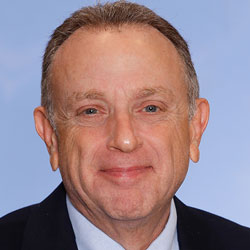 Robert Vogel, DDS This fast-moving clinical based presentation will provide a step by step approach to diagnosis and treatment of the fully and partially edentulous patient with removable prosthesis including overdentures and implant retained removable partial dentures. Scientifically based tips, tricks and techniques will be presented to assure long-term success with precision, productivity and ideal patient care. Issues discussed will include ideal number and position of implants, attachment selection, prosthesis design and introduction of all new prosthetics components. Recorded - December 3, 2022
Robert Vogel, DDS This fast-moving clinical based presentation will provide a step by step approach to diagnosis and treatment of the fully and partially edentulous patient with removable prosthesis including overdentures and implant retained removable partial dentures. Scientifically based tips, tricks and techniques will be presented to assure long-term success with precision, productivity and ideal patient care. Issues discussed will include ideal number and position of implants, attachment selection, prosthesis design and introduction of all new prosthetics components. Recorded - December 3, 2022 -
 Lambert Stumpel, DDS The restorative materials that are used for all on four implant fixed prosthesis vary between PMMA, composite, translucent and high strength Zirconia. Most need internal reinforcement to function successfully in the oral environment. Historically support consisted of a cast gold bar, in recent years CAD/CAM milled titanium has been popularized. Today yet another support system has been developed. It allows the fabrication of a metal bar in about 20-30 minutes, at a fraction of the cost of current CAD/CAM bars. This presentation will show how a prefabricated modular system, when combined with modern printing and milling techniques, allows the fabrication of a final prosthesis near time of implant placement. Recorded – February 25, 2023
Lambert Stumpel, DDS The restorative materials that are used for all on four implant fixed prosthesis vary between PMMA, composite, translucent and high strength Zirconia. Most need internal reinforcement to function successfully in the oral environment. Historically support consisted of a cast gold bar, in recent years CAD/CAM milled titanium has been popularized. Today yet another support system has been developed. It allows the fabrication of a metal bar in about 20-30 minutes, at a fraction of the cost of current CAD/CAM bars. This presentation will show how a prefabricated modular system, when combined with modern printing and milling techniques, allows the fabrication of a final prosthesis near time of implant placement. Recorded – February 25, 2023 -
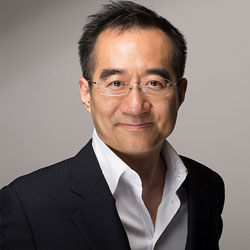 Joseph Kan, DDS, MS Esthetics immediate tooth replacement, a controversial, yet intriguing treatment concept conceived more than 25 ago. While the concept has evolved over time, numerous debates had been dedicated to its validity. Now, 25 years later, questions remain: Does it maintain gingival esthetics? Does it work as well as implant in healed sites? Is it a viable option after all ? This presentation will focus on pros and cons of esthetics immediate tooth replacement. More importantly, did we validate this procedure from lessons learned by mistakes made over the past 25 years. Recorded - November 12, 2022
Joseph Kan, DDS, MS Esthetics immediate tooth replacement, a controversial, yet intriguing treatment concept conceived more than 25 ago. While the concept has evolved over time, numerous debates had been dedicated to its validity. Now, 25 years later, questions remain: Does it maintain gingival esthetics? Does it work as well as implant in healed sites? Is it a viable option after all ? This presentation will focus on pros and cons of esthetics immediate tooth replacement. More importantly, did we validate this procedure from lessons learned by mistakes made over the past 25 years. Recorded - November 12, 2022 -
 Ueli Grunder, DMD Although we all prefer to talk about beautiful successes, it is usually more interesting to talk about complications. Even before a planned implantation in the esthetic zone, there may be problems that require a special intervention. During implant therapy, usually in combination with bone and soft tissue augmentation, undesirable complications can occur, especially in the way of poor healing, and finally, unsatisfactory results are seen after the end of the treatment, which may require re-treatment. In most cases, the complications manifest themselves quantitatively or qualitatively in the soft tissue. In this lecture we will discuss how to deal with certain complications. Unfortunately, only a few examples can be discussed within the scope of this lecture. Recorded - June 21, 2022
Ueli Grunder, DMD Although we all prefer to talk about beautiful successes, it is usually more interesting to talk about complications. Even before a planned implantation in the esthetic zone, there may be problems that require a special intervention. During implant therapy, usually in combination with bone and soft tissue augmentation, undesirable complications can occur, especially in the way of poor healing, and finally, unsatisfactory results are seen after the end of the treatment, which may require re-treatment. In most cases, the complications manifest themselves quantitatively or qualitatively in the soft tissue. In this lecture we will discuss how to deal with certain complications. Unfortunately, only a few examples can be discussed within the scope of this lecture. Recorded - June 21, 2022 -
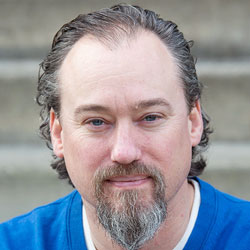 Cory Roletto, MBA This course will cover the most recent changes in online marketing and provide the components needed to create a comprehensive marketing strategy for both existing practices or start-ups. You will learn the key items to implement, how they work, and how to measure success. In this session we will discuss changes in Google’s algorithm, website optimization, social media, accessibility, and ways you can optimize your website to generate new patients. Recorded - March 23, 2022
Cory Roletto, MBA This course will cover the most recent changes in online marketing and provide the components needed to create a comprehensive marketing strategy for both existing practices or start-ups. You will learn the key items to implement, how they work, and how to measure success. In this session we will discuss changes in Google’s algorithm, website optimization, social media, accessibility, and ways you can optimize your website to generate new patients. Recorded - March 23, 2022 -
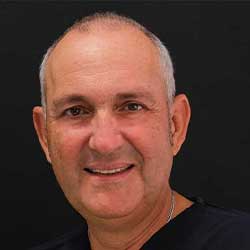 Hakan Özyuvacı, DDS, PhD Nowadays, implant applications to compensate for missing teeth have become very common. As in many cases, we can easily apply implants. Unfortunately, during implant applications, we often encounter hard and soft tissue deficiencies and we apply many different methods to compensate for these deficiencies. Although there are cases where we have performed with advanced surgical techniques and achieved good results, we have pursued alternative treatment methods due to the risk of complications and the prolonged treatment period. In this presentation, current treatment methods preferred to shorten treatment processes and reduce complication risks and the advantages and disadvantages of advanced surgical techniques we have previously applied will be discussed. Upon completion of this presentation, participants should be able to: 1) Discuss comprehensive implant treatment. 2) Describe how to reduce the risk of complications and treatment processes of advanced surgical techniques. 3) Explain the predictable advantages of alternative treatment methods with fewer angled implants or shortened implant placement. Recorded September 24th
Hakan Özyuvacı, DDS, PhD Nowadays, implant applications to compensate for missing teeth have become very common. As in many cases, we can easily apply implants. Unfortunately, during implant applications, we often encounter hard and soft tissue deficiencies and we apply many different methods to compensate for these deficiencies. Although there are cases where we have performed with advanced surgical techniques and achieved good results, we have pursued alternative treatment methods due to the risk of complications and the prolonged treatment period. In this presentation, current treatment methods preferred to shorten treatment processes and reduce complication risks and the advantages and disadvantages of advanced surgical techniques we have previously applied will be discussed. Upon completion of this presentation, participants should be able to: 1) Discuss comprehensive implant treatment. 2) Describe how to reduce the risk of complications and treatment processes of advanced surgical techniques. 3) Explain the predictable advantages of alternative treatment methods with fewer angled implants or shortened implant placement. Recorded September 24th -
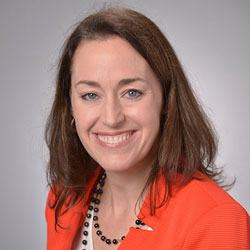 Lourdes Ann Christopher, DDS, MS Soft tissue grafting is a viable treatment option for root coverage and enhancement of gingival biotype as well as the prevention of future gingival recession around teeth. Soft tissue grafting techniques around teeth have evolved over the years resulting in better and more predictable clinical outcomes. Research has found that like teeth, dental implants have better long-term prognosis when they have improved soft tissue quality and thickness. This presentation will give a background on the rationale for soft tissue grafting around teeth and dental implants. Various advanced surgical techniques will be presented with an emphasis on timing to improve outcomes both in terms of patient morbidity and long-term stability. There will be discussion of the use of L-PRF, homeopathic supplements, lasers and biologics to enhance wound healing as well as post grafting frenectomy and vestibular extensions to stabilize the gingival margin post hard and soft tissue grafting. Recorded - February 16, 2021
Lourdes Ann Christopher, DDS, MS Soft tissue grafting is a viable treatment option for root coverage and enhancement of gingival biotype as well as the prevention of future gingival recession around teeth. Soft tissue grafting techniques around teeth have evolved over the years resulting in better and more predictable clinical outcomes. Research has found that like teeth, dental implants have better long-term prognosis when they have improved soft tissue quality and thickness. This presentation will give a background on the rationale for soft tissue grafting around teeth and dental implants. Various advanced surgical techniques will be presented with an emphasis on timing to improve outcomes both in terms of patient morbidity and long-term stability. There will be discussion of the use of L-PRF, homeopathic supplements, lasers and biologics to enhance wound healing as well as post grafting frenectomy and vestibular extensions to stabilize the gingival margin post hard and soft tissue grafting. Recorded - February 16, 2021 -
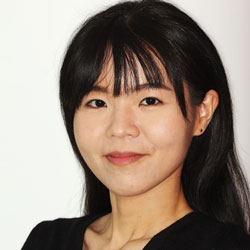 Chia-Yu (Jennifer) Chen, DMD, DMSc With the advent of digital dentistry, clinicians find themselves inundated with new materials, hardware and software in daily practice. A thorough comprehension of the technologies will help us integrate digital solutions to promote communication, as well as accelerating treatment processes and optimizing treatment outcomes. This presentation will allow dentists to become familiar with the digital workflow, with an emphasis on the implementation of additive manufacturing, namely 3D printing technology in practice. The various 3D printing technologies (FDM, SLA and DLP) and their pros and cons will be discussed. Clinical scenario will be presented to demonstrate their respective indications. Recorded - June 9, 2021
Chia-Yu (Jennifer) Chen, DMD, DMSc With the advent of digital dentistry, clinicians find themselves inundated with new materials, hardware and software in daily practice. A thorough comprehension of the technologies will help us integrate digital solutions to promote communication, as well as accelerating treatment processes and optimizing treatment outcomes. This presentation will allow dentists to become familiar with the digital workflow, with an emphasis on the implementation of additive manufacturing, namely 3D printing technology in practice. The various 3D printing technologies (FDM, SLA and DLP) and their pros and cons will be discussed. Clinical scenario will be presented to demonstrate their respective indications. Recorded - June 9, 2021 -
 Recorded on May 20th, 2025 Description: This presentation explores the expanding role of 3D printing technology in implant prosthetic dentistry, highlighting its impact on clinical workflows and treatment outcomes. Attendees will gain insight into how additive manufacturing is applied to the fabrication of surgical guides and various temporary/definitive prostheses, from crowns to complete-arch frameworks. The talk will include current trends, clinical applications, and patient treatment examples demonstrating the benefits of 3D printing in enhancing precision, efficiency, and patient-specific care. Participants will also learn to differentiate between various types of 3D printers and their suitability for specific prosthodontic applications. In addition, the presentation will guide the selection of appropriate resins used in printing implant-supported restorations. Upon completion of this presentation, participants should be able to: 1) Discuss the extent of use of 3D printers in implant prosthetic dentistry. 2) Identify the types of printers suitable for implant prosthodontics. 3) Select the appropriate type of resins that can be used for 3D printed implant restorations. Burak Yilmaz, DDS, PhD Dr. Burak Yilmaz received his dental and PhD degrees from the Ankara University and his subsequent academic titles at The Ohio State University, College of Dentistry. He was promoted to the rank of Associate Professor with tenure in 2014, and to the rank of Full Professor in 2019. He was involved in teaching dental and postdoctoral students and performing research, while practicing in the Dental Faculty Practice during his time at The Ohio State University. In September 2020, he became the Director of the Digital Dental Technologies Research Laboratory at the University of Bern School of Dental Medicine. He is also an Adjunct Professor at The Ohio State University. He holds a special interest in implant prosthodontics and digital dentistry and published more than 340 research studies and clinical reports. He is the co-author of the Implants Chapter in 5th and 6th editions of “Contemporary Fixed Prosthodontics” textbook by Rosenstiel et al. He serves as the Associate Editor of the Journal of Prosthodontics, is a member of the Editorial Board of the Journal of Prosthetic Dentistry and the Journal of Dentistry, Digital Dentistry Section, and serves on the AO/OF Research Committee for the Academy of Osseointegration. Dr. Yilmaz has indicated the following relevant financial relationships to disclose: Spoken at Meetings: Neoss Implants, Straumann, Kaladent, Received honoraria: Neoss Implants, Saremco, Dentbird, Kaladent Employed by/provided consulting for: Dentbird Performed research sponsored by: DWS/Dfab, Neoss Implants Relevant literature for further information: Çakmak G, Cuellar AR, Donmez MB, Schimmel M, Abou-Ayash S, Lu W-E, Yilmaz B. Effect of Printing Layer Thickness on the Trueness and Margin Quality of 3D-Printed Interim Dental Crowns. Applied Sciences. 2021; 11(19):9246. https://doi.org/10.3390/app11199246 Sabatini GP, Yoon HI, Orgev A, Fonseca M, Molinero-Mourelle P, Yilmaz B, Cakmak G. Complete Digital Workflow for Fabricating an Occlusal Device Using Artificial Intelligence- Powered Design Software and Additive Manufacturing: A Dental Method. Int J Prosthodont. 2024 Feb 21;37(7):275-284. doi: 10.11607/ijp.8941. PMID: 38787592.
Recorded on May 20th, 2025 Description: This presentation explores the expanding role of 3D printing technology in implant prosthetic dentistry, highlighting its impact on clinical workflows and treatment outcomes. Attendees will gain insight into how additive manufacturing is applied to the fabrication of surgical guides and various temporary/definitive prostheses, from crowns to complete-arch frameworks. The talk will include current trends, clinical applications, and patient treatment examples demonstrating the benefits of 3D printing in enhancing precision, efficiency, and patient-specific care. Participants will also learn to differentiate between various types of 3D printers and their suitability for specific prosthodontic applications. In addition, the presentation will guide the selection of appropriate resins used in printing implant-supported restorations. Upon completion of this presentation, participants should be able to: 1) Discuss the extent of use of 3D printers in implant prosthetic dentistry. 2) Identify the types of printers suitable for implant prosthodontics. 3) Select the appropriate type of resins that can be used for 3D printed implant restorations. Burak Yilmaz, DDS, PhD Dr. Burak Yilmaz received his dental and PhD degrees from the Ankara University and his subsequent academic titles at The Ohio State University, College of Dentistry. He was promoted to the rank of Associate Professor with tenure in 2014, and to the rank of Full Professor in 2019. He was involved in teaching dental and postdoctoral students and performing research, while practicing in the Dental Faculty Practice during his time at The Ohio State University. In September 2020, he became the Director of the Digital Dental Technologies Research Laboratory at the University of Bern School of Dental Medicine. He is also an Adjunct Professor at The Ohio State University. He holds a special interest in implant prosthodontics and digital dentistry and published more than 340 research studies and clinical reports. He is the co-author of the Implants Chapter in 5th and 6th editions of “Contemporary Fixed Prosthodontics” textbook by Rosenstiel et al. He serves as the Associate Editor of the Journal of Prosthodontics, is a member of the Editorial Board of the Journal of Prosthetic Dentistry and the Journal of Dentistry, Digital Dentistry Section, and serves on the AO/OF Research Committee for the Academy of Osseointegration. Dr. Yilmaz has indicated the following relevant financial relationships to disclose: Spoken at Meetings: Neoss Implants, Straumann, Kaladent, Received honoraria: Neoss Implants, Saremco, Dentbird, Kaladent Employed by/provided consulting for: Dentbird Performed research sponsored by: DWS/Dfab, Neoss Implants Relevant literature for further information: Çakmak G, Cuellar AR, Donmez MB, Schimmel M, Abou-Ayash S, Lu W-E, Yilmaz B. Effect of Printing Layer Thickness on the Trueness and Margin Quality of 3D-Printed Interim Dental Crowns. Applied Sciences. 2021; 11(19):9246. https://doi.org/10.3390/app11199246 Sabatini GP, Yoon HI, Orgev A, Fonseca M, Molinero-Mourelle P, Yilmaz B, Cakmak G. Complete Digital Workflow for Fabricating an Occlusal Device Using Artificial Intelligence- Powered Design Software and Additive Manufacturing: A Dental Method. Int J Prosthodont. 2024 Feb 21;37(7):275-284. doi: 10.11607/ijp.8941. PMID: 38787592. -
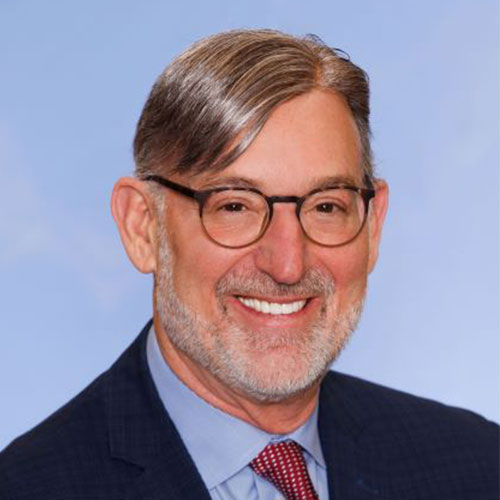
Robert Levine, DDS
This clinical, usable information- packed presentation will describe and identify 10 essential keys for performing immediate single tooth replacement of a hopeless maxillary central incisor. This treatment is considered a complex procedure and a team approach is suggested as the maxillary central incisor is seen as having the most esthetic zone failures resulting in unhappy patients. Once this occurs, restoring the lost hard and soft tissues to their original pre-surgical levels is near impossible. The updated 10 Keys checklist, if strictly followed, will provide high predictability in preventing esthetic complications and offers guidelines to ensure high success based on published studies by Dr. Levine and his clinical research group which confirm the use of the 10 Keys protocol.
Recorded February 4, 2023

